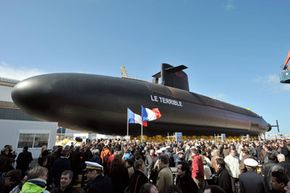For at least a thousand years, dominating the oceans has been a key step toward dominating the world. Britain, France, Spain, Portugal and the Netherlands waged war on the high seas for centuries in a global competition to control commerce, protect shipping and spread influence in the form of colonies.
The sea lanes were, for hundreds of years leading into the 20th century, ruled by warships belonging to the British Empire. The overwhelming British naval advantage made many inventors, engineers and sailors from all over the globe dream of ways of to sneak up on the powerful British boats while remaining concealed in the depths of the ocean. In time, these fanciful dreams became reality in the form of the first practical submarine designs.
Advertisement
Although early submarines were less-than-seaworthy, their progression through present times has been remarkable. In the beginning, the first attack subs consisted of a man hand-cranking away in a wood and leather suicide tube while attempting to attach explosives to a battleship using a wooden screw. Nearly 200 years later, men could remain underwater for weeks at a time while crossing the globe on a submarine with a nearly limitless supply of power and the means to destroy several large cities. The age of the nuclear submarine had arrived.
A nuclear submarine is an amazing machine. Consider for a moment how difficult it is to design a seaworthy vessel that can travel to great depths beneath the surface, launch ballistic missiles while underwater and maintain the life functions of a full crew onboard. All of this seems incredible without stopping to consider that one or two nuclear reactors are incorporated into the ship's design.
In this article, we'll learn about the history of the nuclear submarine, its weaponry and its amazing capabilities. In the next section, we'll see why attaching a time bomb to a short stick on the end of your experimental submarine isn't always such a great idea.

